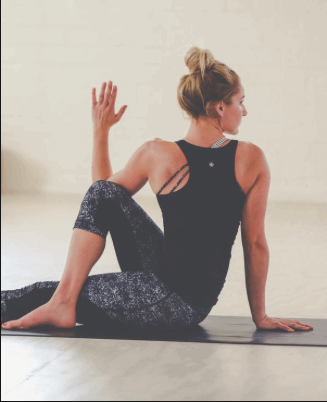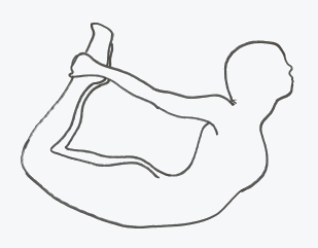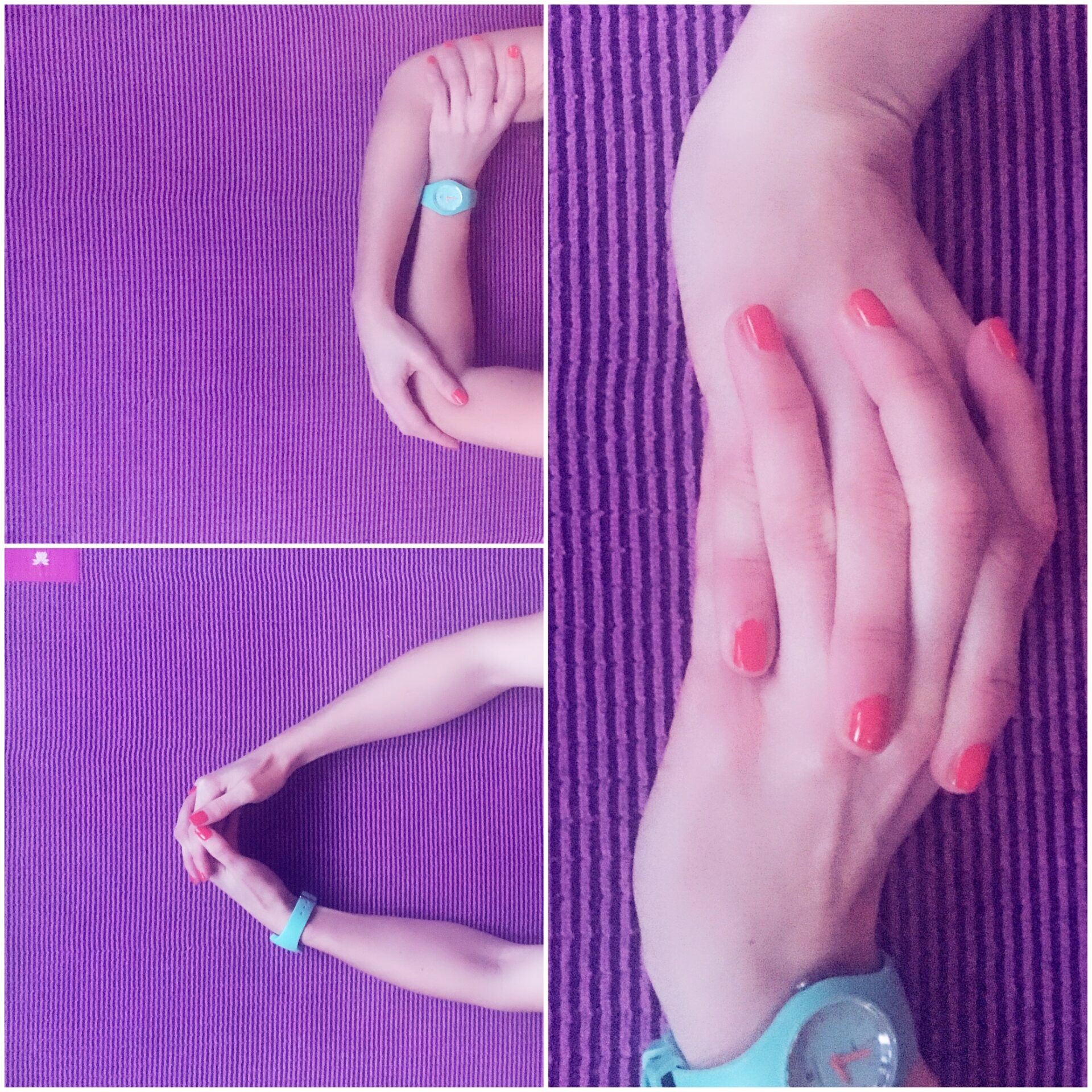
Yoga for glowing skin – 3 simple postures
Yoga is touted with many benefits, and I personally find it amazing for de-stressing and clearing my mind, but can it really help improve your skin? In a word, yes. Stress wreaks havoc on your skin, so anything that reduces this can relieve all the awful things it produces – sleepless nights, stress hormones, weight gain etc, etc. There are postures that boost blood flow, improve digestion and stimulate the thyroid – all contributing to glowing skin.
Seated spinal twist (Ardha Matsyendrasana)
Yoga twists are recommended for digestion and detoxing, and also help strengthen back muscles and open the chest. This posture is a simple, straightforward one suitable for most beginners – of course if you have any injuries or feel intense pain with any posture you should check with a yoga teacher or physio before making it part of your daily routine. Most people are unaware (I certainly was) that more pain does not necessarily mean more gain – a feeling of slight pressure or stretching during yoga is normal, sharp or severe pain because you’re bracing during a posture is bad.

Beginning in “staff pose” or Dandasana (sitting on your mat with your legs stretched out straight in front of you), bend your right knee and cross it over your left leg. Holding your right arm around the knee (or use your elbow, as in the image above), inhale and stretch your left arm up above your head, lengthening your spine. Exhaling, twist your left arm behind you and bring your hand down to the floor. Breathing deeply, twist from your core, twisting deeper into the posture on every exhale. The key here is not to strain your neck, and only turn your head at the very end – focus on twisting from core, ribcage and upper chest. Repeat on the other side.
Bow (Dhanurasana)
A very simple posture that is purported to help stimulate digestion, and also acts as a balance for shoulders the have been slumped forward at a computer or desk all day long (or, if like me, you habitually have less than perfect posture and you’ve been told to “stand up straight” for most of your life).

Lying face down on your mat, bend your legs and grasp hold of the outside of your ankles with each hand. Activating your core and rolling your shoulders back and down, use your legs to to pull your upper body off the ground, not the other way around. Don’t allow your legs to splay out to the side, keep them in line with your hips. Flex your feet so your toes are pointing away from you, and keep your shoulders away from your ears.
Headstand (Shirshasana )
This one can seem intimidating for yoga newbies, but I promise you it’s not as hard as it looks and you can start with “half-headstand”. Head stands and inversions (upside down type postures) improve blood flow to the scalp and face, and also the brain – so this is the perfect way to wake up. Some yogis claim it delays the onset of grey hair, or can even convert grey back to the previous colour – I’m not convinced about that one, but be sure to let me know if if you magically manage to dye your hair. Practicing headstands really strengthens deep core muscles, the end game here is being able to “step” in a controlled manner up into the posture – not jumping wildly and hoping to God your legs stay up (this describes my previous approach very accurately, I haven’t actually seen you, don’t worry).

Starting on all fours on your mat, hold onto each elbow with the opposite hand. This distance is the measurement for how far apart your elbows should be. Interlock your fingers so that your arms form a triangle and tuck the bottom baby finger inside, so both little fingers are pressed against the mat. Really press down into the mat with your arms, forming a stable base for your headstand. Place the crown of your head on the floor, right into the point of this triangle, with the back of your head fitting into your hands. Lift your knees off the ground and walk your feet slowly toward your body, straightening your spine and engaging your core, with your hips raised up towards the sky. How close you can walk your feet will vary – your limit is dictated by your core, make sure your neck, back and hips line up with your head and are stable and strong. You can do this against a wall for support at the beginning, and you’d be surprised how far you can progress with daily practice., stepping closer and closer with your feet until you can hold them above you. As your core strength increases, you will find yourself able to step up into a headstand without jumping – I promise you this will eventually happen if you’re persistent, I was a disaster at this when I started teacher training, I remember being completely mortified throughout the course, but now it’s my favourite posture. The below image from Lululemon (the best yoga clothes shop) shows the different stages really clearly.

Adding these postures into an established yoga routine is pretty simple, and for those aspiring yogis, a couple of salute to the suns rounds is the perfect warm up. Always be careful with any existing injuries and never push yourself through sharp or intense pain – you won’t become a yogi any quicker (in fact you’re really doing the opposite) and could do a lot of damage.

